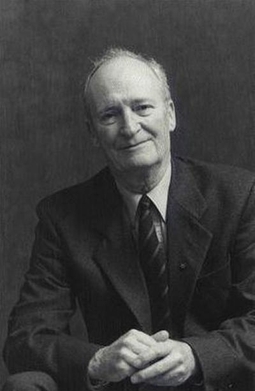Alan Carrington facts for kids
Quick facts for kids
Alan Carrington
|
|
|---|---|
 |
|
| Born | January 6, 1934 |
| Died | August 31, 2013 (aged 79) |
| Alma mater | University of Southampton (BSc, PhD) |
| Scientific career | |
| Institutions | |
| Thesis | The electronic structure, spectra and properties of transition metal oxyanions |
| Doctoral advisor | Martyn Symons |
| Doctoral students | Timothy Softley |
Alan Carrington (born January 6, 1934 – died August 31, 2013) was a famous British chemist. He was known as one of the best scientists studying "spectroscopy" in the late 1900s. Spectroscopy is a way to study matter by looking at how it interacts with light. It helps scientists understand what things are made of and how they behave.
Early Life and Education
Alan Carrington went to Colfe's School when he was younger. He then studied at the University of Southampton. Here, he earned his first degree (B.Sc.) and his advanced degree (Ph.D.). While working on his Ph.D., he also spent a year doing research at the University of Minnesota in the USA.
Career and Research
Carrington started his career as a Fellow at Downing College, Cambridge from 1959 to 1967. He worked closely with another scientist, Christopher Longuet-Higgins. In 1963, he became an assistant director of research there.
In 1967, Carrington returned to the University of Southampton. He became one of the youngest chemistry professors in Britain at that time. From 1979 until he retired in 1999, he was a special Royal Society Research Professor.
Between 1984 and 1987, Carrington moved his research to the University of Oxford. His lab was in the Physical Chemistry Laboratories. While at Oxford, he was also a Fellow at Jesus College, Oxford. He moved his research back to the University of Southampton in 1987 and stayed there until he retired in 1999.
Understanding Molecules
Carrington's early work focused on magnetic resonance. This is a scientific method that uses magnetic fields to study the structure of atoms and molecules. He wrote an important book about this topic called 'Introduction to Magnetic Resonance with Applications to Chemistry and Chemical Physics'.
Later, Carrington studied molecular ions. These are molecules that have an electric charge. He looked at their structure when they were close to breaking apart. His work provided very accurate measurements. These measurements helped other scientists check their theoretical calculations.
He made important discoveries about the simplest molecules, those with two or three atoms. His measurements were so precise that they are still hard for others to match. He also wrote another important book, "Rotational Spectroscopy of Diatomic Molecules," about this work.
Awards and Honours
Alan Carrington received many awards for his important scientific work:
- In 1971, he was chosen as a Fellow of the Royal Society (FRS). This is a very high honour for scientists in the UK.
- He received the Faraday Lectureship Prize in 1986.
- He was awarded the Davy Medal in 1992.
- In 1994, he became a Foreign Associate of the US National Academy of Sciences.
- He was the President of the Faraday Division of the Royal Society of Chemistry from 1997 to 1998.
- In 1999, he was made a Commander of the Order of the British Empire (CBE).
- In 2000, he became an Honorary Fellow of Downing College, Cambridge.

